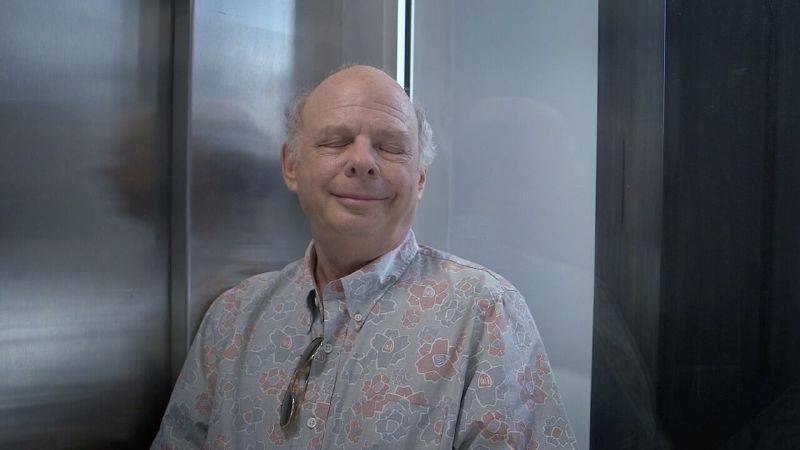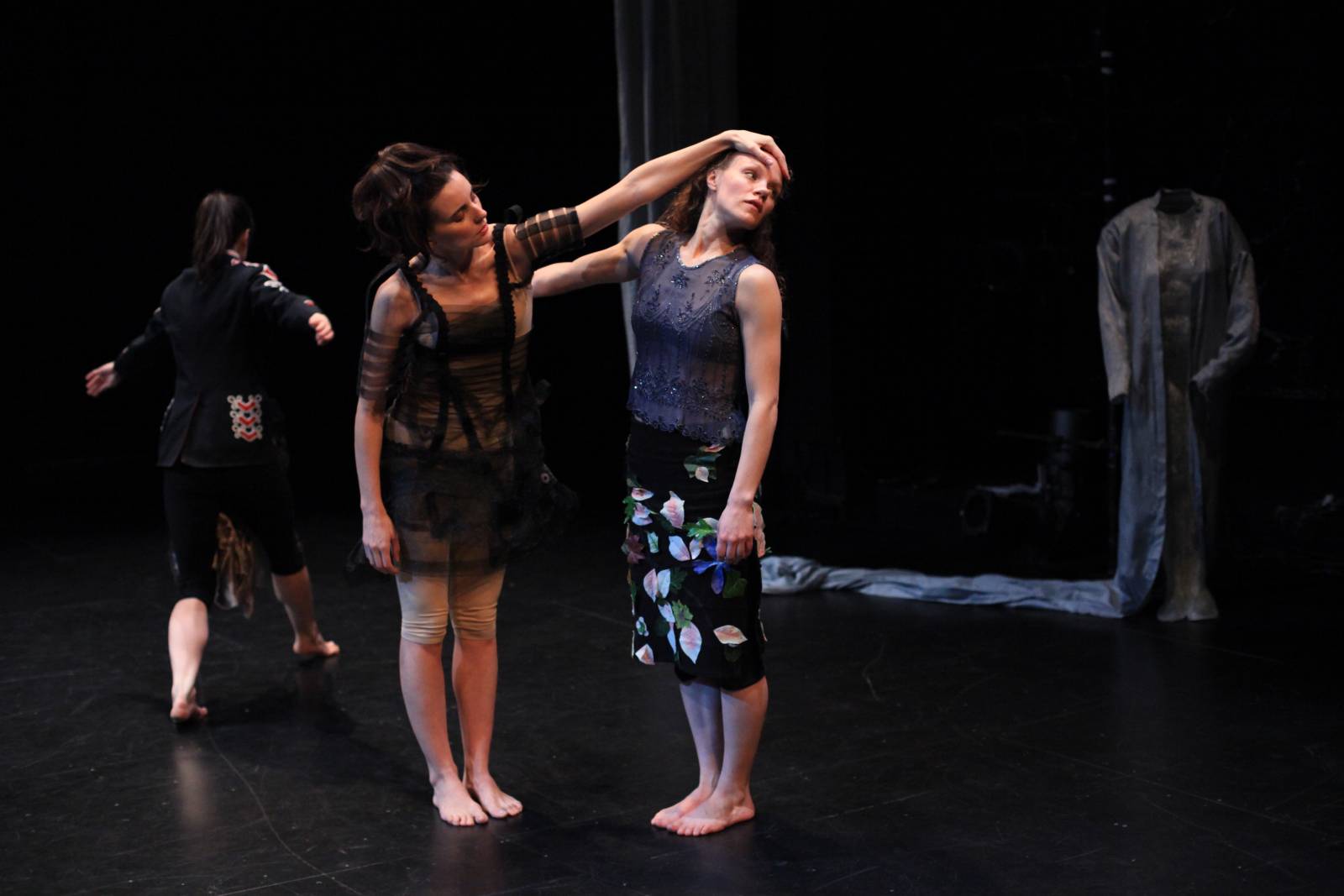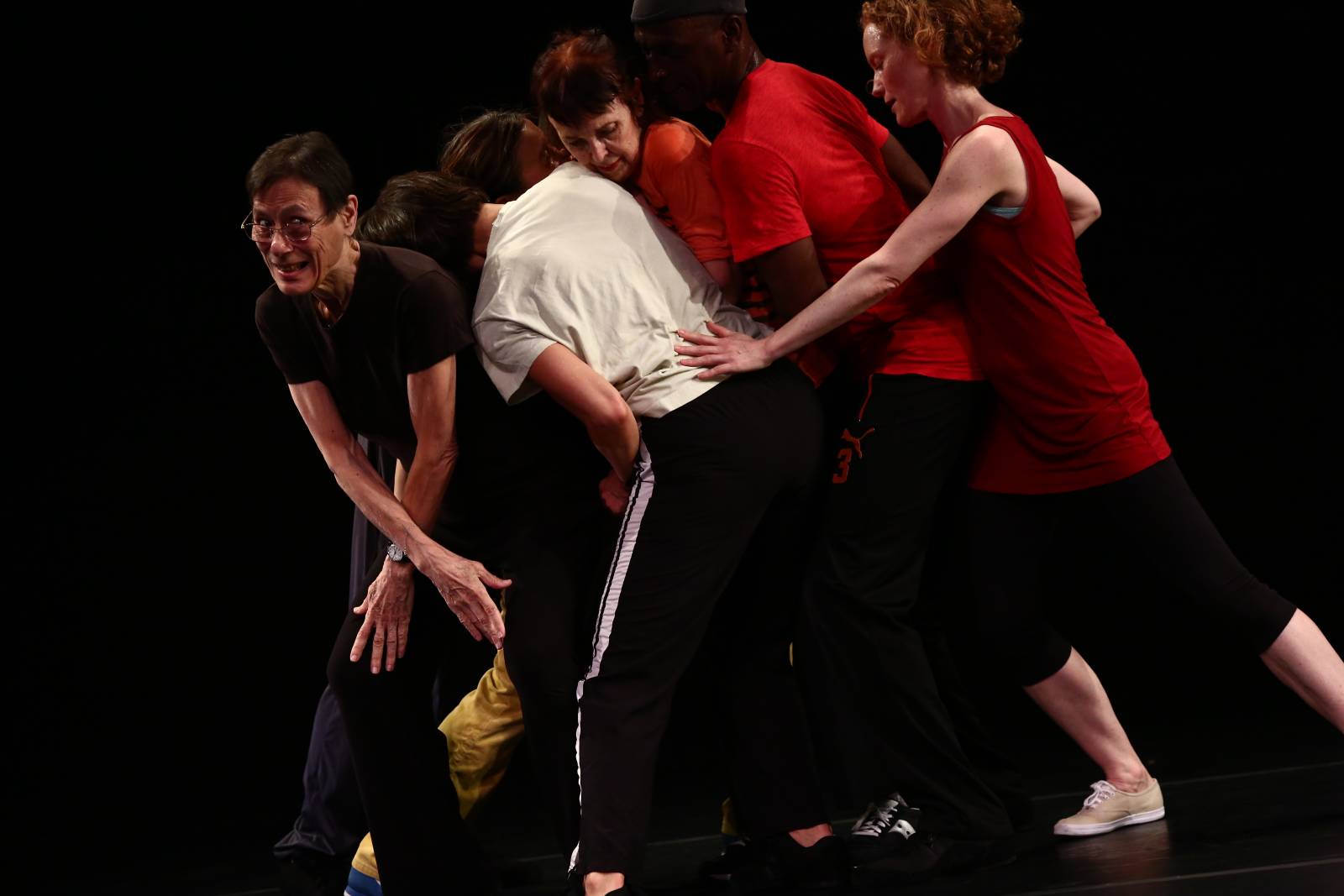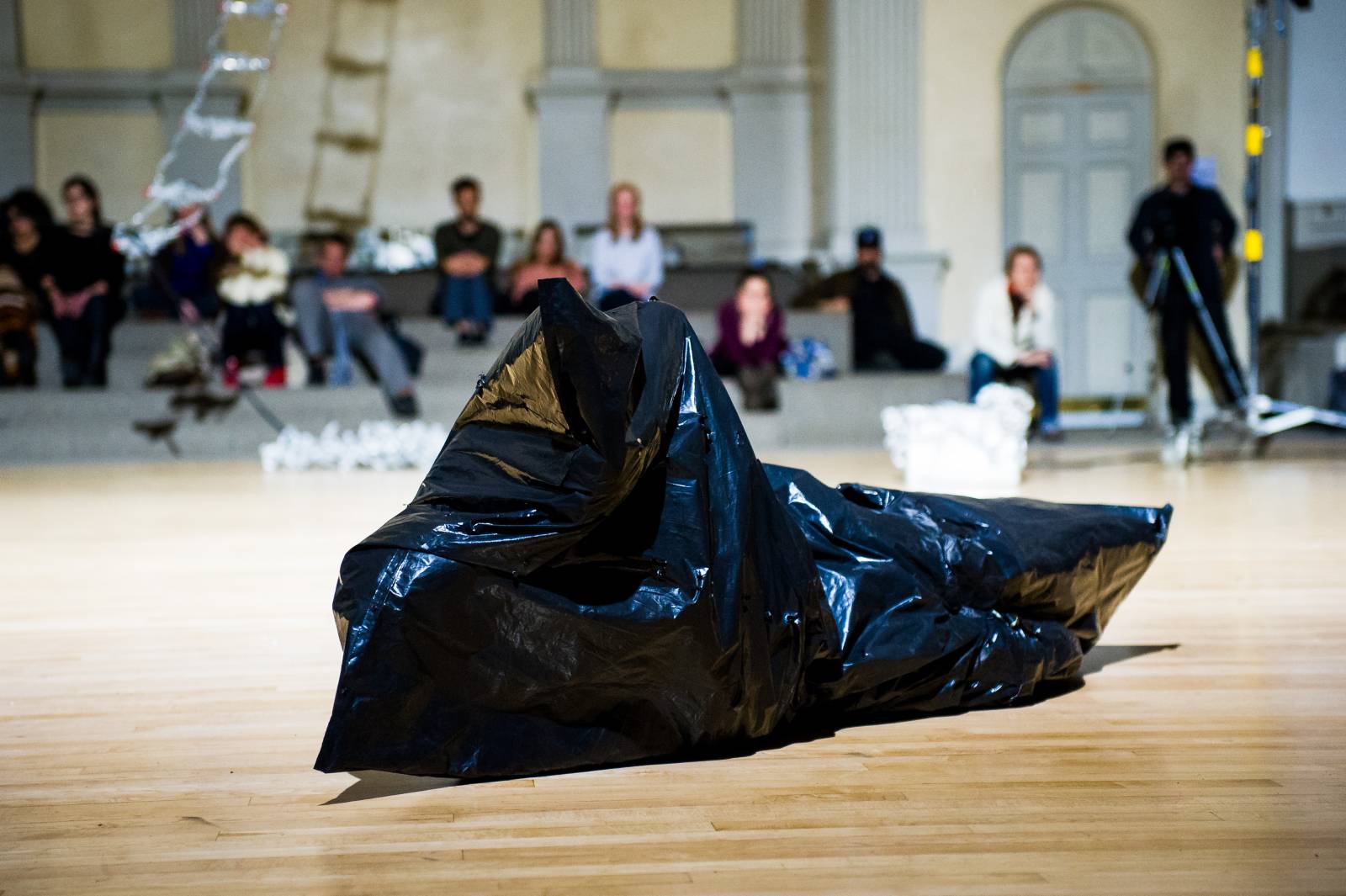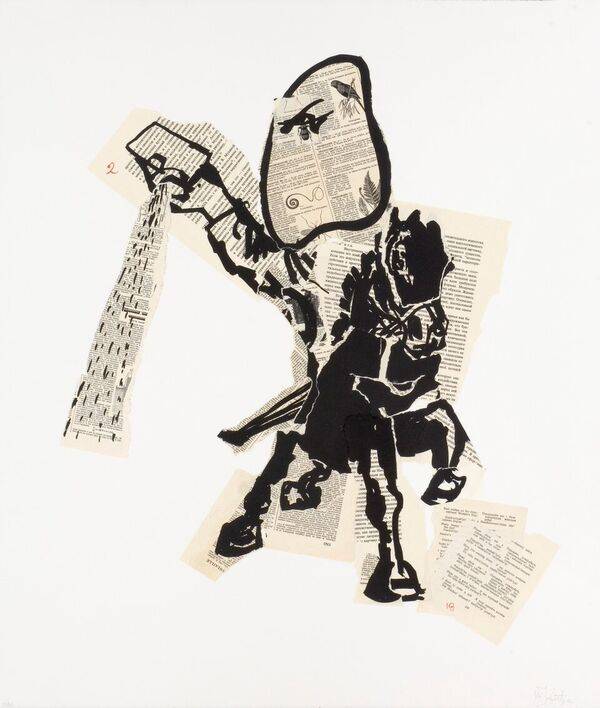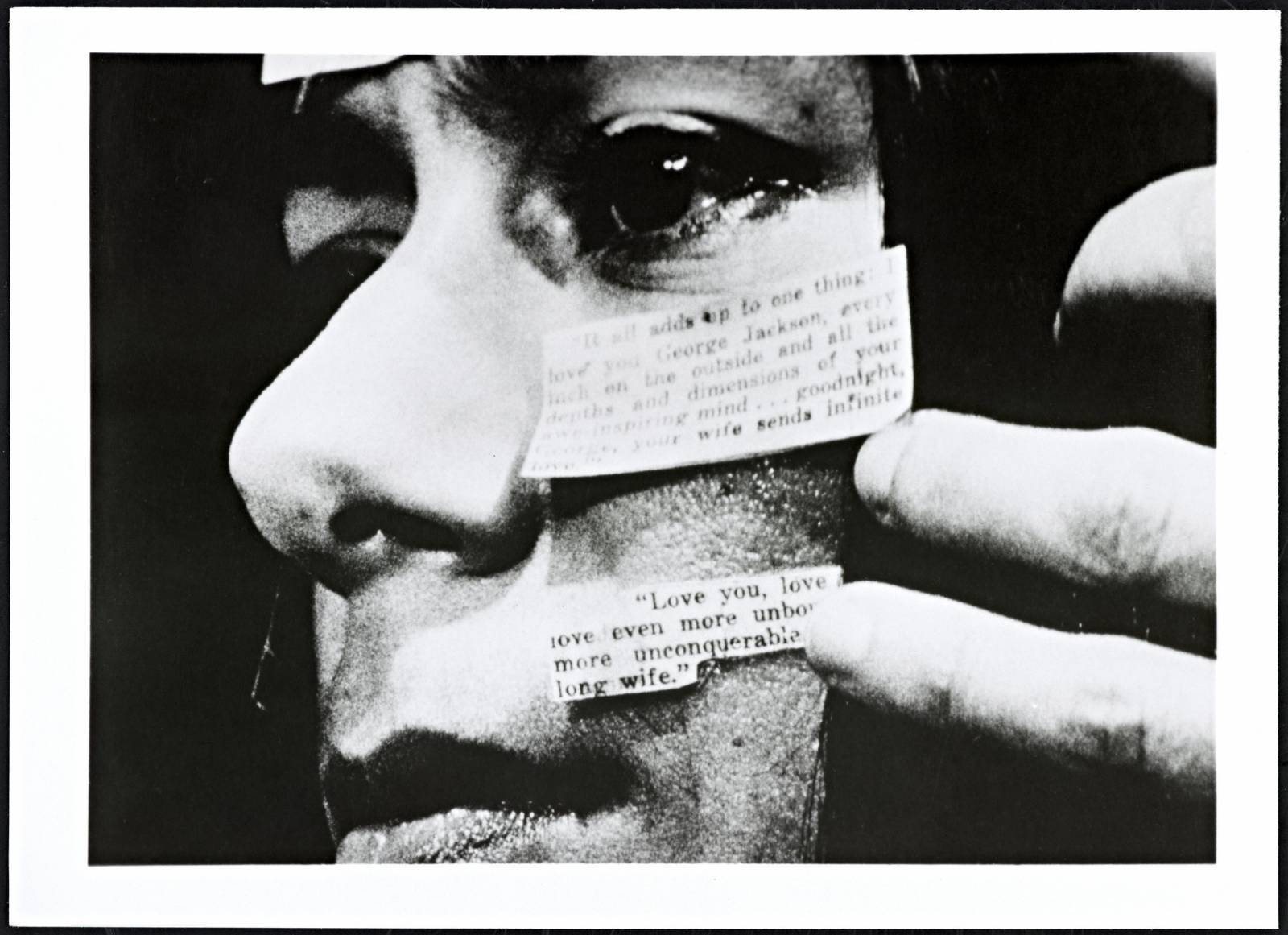Young Jean Lee (born 1974) is an experimental playwright, director, and filmmaker who started out studying Shakespeare, became a student of Mac Wellman at Brooklyn College, then set out on the downtown New York scene in the mid-2000s. Ranging from a comedic drama about the Romantic poets to a rock cabaret, from a nude all-women show with no dialogue to a naturalistic investigation of existential crisis in the straight white male, her plays have toured internationally and garnered many awards. Lee is currently under commission from Lincoln Center Theater and the Oregon Shakespeare Festival and has written a screenplay commission for Plan B/Paramount Pictures. In 2013, she released her first short film, Here Come the Girls, as well as her debut album, We’re Gonna Die, with her band, Future Wife.
IToP
Our first question is, “With what kinds of artists or art professionals are you most comfortable conversing? Who speaks your language?” In your case I suspect you share a language of subversion with like-minded artists working in any discipline.
YJL
Yes, that’s true.
IToP
Do you mostly hang out with “experimental” artists?
YJL
That’s changed. I spend time with more traditional theater writers now too. But it’s still mostly downtown.
IToP
Are you also friends with visual artists?
YJL
Yes, actually, I have a visual artist on my board now, Margaret Lee; she owns the gallery 47 Canal. Debra Singer, the curator who used to run the Kitchen, is on my board too. They are throwing a big benefit for me in a couple of weeks, with a bunch of art people. A lot of artists donated work to be sold at the benefit, too. So I’m starting to get to know more artists.
IToP
Do you talk with each other about “multidisciplinarity,” the value of crossing boundaries between, say, theater, dance, performance?
YJL
We don’t sit around talking about it; we talk a lot about form and content. “Multidisciplinarity” is mostly of interest to funders, who are looking for work that is boundary-pushing, and being interdisciplinary is an obvious way to push boundaries. To me, multidisciplinary is basically just a marketing term. When I think about interdisciplinary theater, I think about a play with a movie screen and a projected backdrop. It’s not super interesting. Experimental theater has been using TVs for a really long time, but now it’s the standard: everybody is using video screens now. That’s a very real shift that’s occurred. I just don’t think it’s added very much to theater. Some people have always used it in interesting ways, like the Wooster Group. It makes sense for their work. But with a lot of people, it’s just pretty designs on a screen.
Dance and theater are blending together right now in experimental theater, though, and that hybrid is much more interesting. At this point I think it’s increasingly difficult to keep them separate. But it’s not new; it had been happening for years before I got to the scene. It was called experimental, not interdisciplinary.
IToP
Can you give some examples of people who are working in this hybrid form?
YJL
There’s the company Big Dance Theater, and it’s basically a choreographer and a director. They make plays that are highly choreographed. It’s sort of both dance and theater at the same time. My show Untitled Feminist Show was a dance-theater piece that was not operating in any way within the context of the dance scene, it wasn’t really in conversation with the dance scene at all, but it was using the elements of dance to make a theater piece. There’s this amazing choreographer named Faye Driscoll, and, to me, her work is very much like theater. Then there’s Dean Moss, a choreographer whose work feels like theater; he also stands out to me. Both Dean and Faye have choreographed for my shows.
I would say that most of the experimental theater makers, we’re making work the way choreographers do. The traditional theater model is, there’s a writer, a director, a producer, and in the dance world, there’s somebody who heads a company, and there’s an ensemble, and they tour the world. That’s sort of the model that experimental people are using, and that makes the work very similar to dance in some ways.
IToP
Did you come onto the scene from conventional theater? How did you gain access to this experimental dance-theater world?
YJL
When I came to New York to make my own work, I had been studying Shakespeare and classical theater for ten years. But I never had any interest in conventional contemporary theater. The Wooster Group and Richard Foreman, who were the most influential groups at that moment, had a big impact on me. All the people I met and worked with, who helped me with my work, were people who had worked for those companies.
IToP
Did you find that you had to learn about a different lineage of historical influences or touchpoints that everyone was influenced by?
YJL
Beckett. Brecht. The Absurdists. The name that comes up the most, actually, was from the 1980s, Reza Abdoh; I never saw his work, and he died young, of AIDS, but he is super, super legendary.
IToP
How do you set about starting to work in a different medium? Do you study the roots?
YJL
Whenever I go into a new genre, I study the people who have been the most influential on the current scene. When I got interested in the cabaret format, I did a lot of research, going to see a lot of traditional cabaret. When I was working on Untitled Feminist Show, I went to the Lincoln Center Library and watched every Pina Bausch show, every Anne Teresa De Keersmaeker, every William Forsythe, all these choreographers.
But I don’t go too far back, not all the way back to the roots. I don’t think I ever had any interest in the roots of anything. Like, who were the first people who did it ever. Except for in theater, because I studied it for so long. Artistically, it’s not helpful for me to go back that far. Actually, to be honest, it’s not that helpful to go back at all. You just get to see how somebody else did it. You read about something in a book and it’s, like, oh that’s so important. Sometimes, I think, as an artist, well, screw all those old people. I want to do my own thing.
IToP
What were you looking for in your research at Lincoln Center?
YJL
Conventions. I feel like you need to know what the conventions are before you can break them. And not just to break them. I learned what looks good in a dance way. Certain decisions would get made over and over by the choreographers, and so I learned, if I want something to look good I do it this way, and if I want it to look bad I do it that way.
IToP
So in a way it’s kind of like a vocabulary.
YJL
Yeah, exactly. If something’s not going to work, it has to be very intentional. And by work, I mean feel harmonious with what people are used to. If something doesn’t work, it has to be deliberate. It can’t be because you just didn’t know. And then that’s a different kind of “working.”
IToP
Is this kind of “literacy” always necessary? Do you see any potential benefits of being “illiterate” within certain disciplines?
YJL
To me, being “literate” means having an awareness of the history of the practice and being familiar with commonly used terminology. I think being literate in other disciplines is only helpful if it’s helpful. Not all artists need that. Being illiterate can be useful in that it can encourage you to come up with new ways of doing things.
Since I’m constantly switching from one genre to another, I’m always struggling with the fact that I don’t know the terminology and don’t have the words to communicate what I want to performers who do know the terminology. When I was working on Untitled Feminist Show, that was a collaboration with Faye Driscoll, and I just literally did not have the vocabulary; it was as if, as a choreographer, she spoke a foreign language. It was super confusing and difficult. I don’t think that was productive. It would have been a lot better if I had known the vocabulary; I could have communicated more effectively with her. We worked it out, but it was more painful than it had to be.
IToP
How do you decide what discipline to work in when you are starting a new project?
YJL
The form and the content always need to have a relationship. The content usually comes before the form; then, as I’m developing the piece, I’m finding the best form that I can find for the content, in the amount of time that I have. I don’t want to say ideal, because I probably could have come up with something even better if I had more time. That’s always the idea.
IToP
And you feel free to add in or subtract out any element of the disciplines you are working in.
YJL
It’s always been like that. My producer builds it into our budget now, because he knows I’m going to change my mind and drastically change things. He’s been doing that for years.
IToP
Are certain kinds of content or ideas more easily explored in certain mediums or formats?
YJL
Untitled Feminist Show started out as a play with dialogue. We did a first workshop, after which the audience did nothing but make academic arguments about feminism. I wanted to hit people on a more emotional level, so as we kept doing workshops, I kept cutting out more and more of the text until there was nothing left but movement.
IToP
Once you stripped away all those elements—narrative, dialogue, characters—what were you looking for at the core?
YJL
I was looking for something that would have a specific impact on me and on the audience, where I didn’t really know what I was watching, and I wasn’t able to articulate a response to it, where it was all happening on an emotional level. That’s what I was looking for. And the audience had wildly different responses. I think pretty much everyone had that unguarded emotional response to it except for those people who—you know, there are always people who come to my shows who are wanting me to do something crazy with the genre, and they get really angry when I don’t. So a lot of dance people really hated that show because it wasn’t in conversation with them. All they felt watching that show was annoyance, because it wasn’t in conversation with current choreographers.
The thing is, I was making that show for the twelve-year-old version of myself, and the twelve-year-old version of myself would have had zero interest in modern dance. It was supposed to be inspiring, to provoke positive feelings in people, and there is something about that that is anathema to a lot of artists—including myself; I didn’t think I would ever want to make a feel-good show. But I thought it was very important for a show called Untitled Feminist Show to defy those expectations that people were bringing to the table. So that’s where I was coming from. I remember seeing all these old lesbian couples in the audience, who clearly have been through stuff that the younger people have not been through, and they were just, like, laughing and crying. It was like their Lion King.
IToP
So if you were thinking of it in terms of genre or discipline, you were frustrated, because you wouldn’t find your vocabulary there. But if you were just open to the show on its own terms, you could enjoy it.
YJL
Yes. There were certainly a lot of sophisticated choreographers and theater makers who loved it, but they accepted it for what it was. I feel like that’s a big problem with all my work. When people hate my work, it’s often because they’re not engaging with it for what it is. For my most recent show, Straight White Men, I saw the traditional three-act structure as the “straight white male” of theatrical forms, or the form that has historically been used to present straight white male narratives as universal. And I thought it would be interesting to explore the boundaries of that form at the same time as its content. It is a naturalistic three-act play, the only conventional narrative I’ve ever done. And at first people just could not enjoy that show. They kept expecting everybody to break the fourth wall or take off all their clothes. People could not even really experience the show, because they were just waiting for that moment to come, and they were so frustrated when it didn't. So I had to build in a pre-show announcement where the audience is told that the actors will stay in character throughout the show and pretend not to see you, and that helped a bit.
IToP
Doing a straightforward narrative was probably the only way you could have surprised them. Now people really don’t know what to expect from your shows.
YJL
It’s true. A lot of people feel like they know to expect that they won’t like it, because whatever it is, it’s going to be completely different from whatever it was that they had liked.
IToP
Do you think it’s difficult for people to free themselves up for an emotional experience, to set aside what they expect of the discipline?
YJL
I don’t think it’s hard for regular audience members, but I think it’s very difficult for people in the field, for professionals. It’s hard for me when I’m an audience member. When you know everything that went into making it, so much of the magic is gone. You’re, like, “Boy, it must have taken a lot of rehearsals to get that right.”
IToP
Has the theater audience changed since you started out?
YJL
It’s still mostly white. In the big theaters, everybody’s over sixty, mostly over seventy. They’re all straight, they’re mostly there in couples. It’s bad. Downtown, of course, it’s much better, much younger, more diverse, but it’s still very white, college-educated. Classwise, there’s very little diversity. I definitely see more diversity in a museum, especially the ones that are free. I find that there’s also a lot more openness in visual art on the part of practitioners and patrons. I feel like theater is way behind visual art. If the art world were the theater world, most people would still be demanding figurative painting. Anybody who did anything remotely abstract would be considered very marginal. Whereas visual art patrons just have always insisted on boldness. In the theater, the older generation just wants their stories, they don’t want anything else, and theater caters to them. In art, there’s a market-driven search for the new, whereas in theater, the market drives the search for the familiar. Also the art world is more about engagement and less about entertainment. I’m getting tired of this demand from theaters that we entertain their audience for an hour.
IToP
You have spoken about fear as a goal; in your work, you want to get in over your head and rattle yourself, even scare yourself. Is provoking audience fear and/or hostility also a goal?
YJL
The shows are designed so that when you’re watching them, you don’t know what you’re watching, or why something is happening, or what’s going on. They’re made to be disorienting. After Straight White Men in LA, the audience was really upset because there was no conclusion to the story. When we workshop the shows, it’s all about wanting a specific response from the audience, generally disorientation. We just keep doing it over and over until it works. We test it on people. If they like it too much, we know it’s not working. That’s the response that we don’t like. Except for Untitled Feminist Show, where it was a struggle to get people to have a good time. People just did not want to see that and have a good time.
IToP
What are you working on now?
YJL
I’ve made two short films, and now I want to make my first feature. I’m actually most interested in film right now, because you can edit together the best performances and that’s what the audience sees every time. People have told me that the downside to that is you’re limited to the performances you got originally and there’s no room for change, the way there is in theater, but I don’t really care about that. For me, the best part about working in theater is that you can develop a script over a long period of time with the actors in the room trying things out. In film, I don’t think that’s how they normally do things. Sometimes there’s no rehearsal at all. So I’m wondering how much of my usual development process I can adapt to film. The problem with film is that it’s even more conventional than theater nowadays. People just want their stories. Whereas in the visual art world there’s lots of room for experimentation with video. I’d love to bring some of all three worlds together somehow in a film, and see what I can do within the limitations of that genre.
